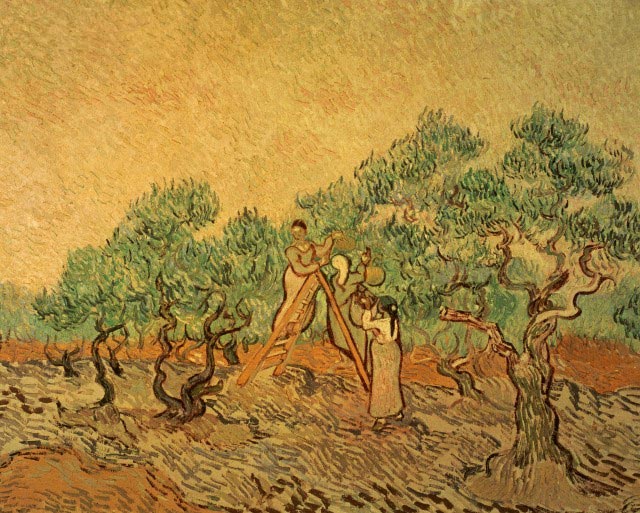
The Chalkidiki variety olives are cultivated in the Northern part of Greece, mainly in the region of central and western Chalkidiki and the western part of Kavala. Specific references to olive groves in Chalkidiki date back to 1415. The fruit of these trees were mainly used for the production of edible olives.
The causal relationship of Chalkidiki and olive, as a tree and as a fruit, is also witnessed by its cultivation and production of olive products in the region for centuries, based on historical documents and the preservation of numerous folk traditions today.
The olive tree in Chalkidiki, during at least the last two centuries, is an important reference point in the economic life, in social activity and in the cultural traditions of the inhabitants. Today, the cultivation of olives in Chalkidiki covers an area of 310,000 ha. with 5 million trees and 19,000 producers. This is the 1/3 of the cultivated area of the county. In the region of Ormylia Halkidiki about a thousand families cultivate 32,000 acres.

From the prevailing-native varieties, the variety Chalkidiki olives of the species Olea Europea, known also as Chondroelia or Gaidourolia (due to the relatively large size of the fruit) occupies 90% of table olive production. Harvesting takes place during the period from 15 September to 10-15 October each year, when the fruit is at the appropriate stage of ripening and has the desired color, according to the monitoring of ripening by the producers and their unions.
The producers pick the fruit by hand and transport the product to the processing units. With the traditional method of harvesting by hand, the excellent physical condition of the olives and the successful further processing is ensured. As with manual sorting and filling of olives the best and authentic final product is ensured. The olives must be clear of leaves, wood and other foreign materials and they should have a uniform green - yellow color, they should not have dents, scratches, attacks from insects and diseases or been eaten by birds, etc.
Since 2012, Green Olives of Chalkidiki are classified PDO product which helped to better inform the producers, the extension of the product's integrated management system implementation as well as the detailed recording and control of production and processing.
The export orientation of several of the units has also contributed to disseminate green olives of Chalkidiki in many foreign countries.
THE NUTRITIONAL VALUE OF OLIVES
The usefulness of the fruit of the olive tree in the human body is widely known due to its rich nutrients. The average energy value of olives is greater than other fruits and vegetables. The processed olives, as offered on our table, contain oil and proteins with almost all primary amino acids, sugars, tannins, minerals with biological value for the human body, such as iron, calcium, potassium, magnesium, phosphorus and others. It is noteworthy that the calcium of olives is higher than that of fruits and vegetables, meat, fish, bread, etc. It is equal to the calcium of cow's milk. The fruits of the olive tree are a wonderful source of monounsaturated fatty acids and are relatively low in total fat. The olives provide fiber and minerals in the body and they are a source of vitamin E which is a natural antioxidant. Finally, edible olives are an important source of vitamin A, a good appetizer which stimulates and benefits the human organism.
« If you deconstruct Greece, you will in the end see an olive tree, a grapevine, and a boat remain. That is, with as much, you reconstruct her. »
~ Odysseas Elytis



